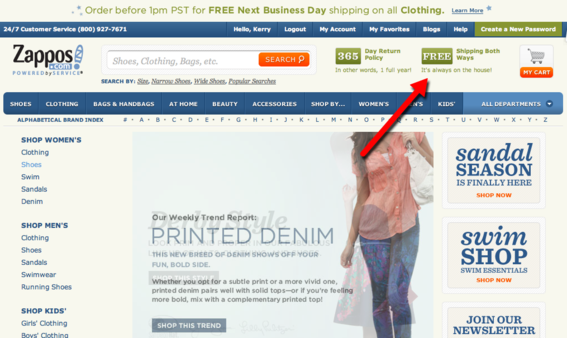Your company’s value proposition is the reason consumers buy your products or services. You may have more than one value proposition, as every customer segment you serve may derive value from different aspects of your offer. You should be able to explain it in 30 seconds — the so-called elevator pitch.
As an ecommerce storeowner, the products or services you sell are a key component of your value proposition. But it is more than just those products or services. Other elements of value you provide include your pricing strategies, promotions, volume discounts, rewards points, free shipping, customer services, product content, availability, return policies, industry knowledge and expertise, and many other factors.
In this article, I’ll examine some of these elements and evaluate how they combine to form your overall value proposition.
Choosing Products and Pricing Strategies
The most important element of your product strategy is to make sure those products meet the needs of your target consumers. If you sell fashion accessories and your target market is 18 to 25 year old females, you may want to choose products that are affordable, trendy, and affiliated with younger celebrities. If your customers are price sensitive, you may carry generic brands or private label items with a lower retail prices.
If your target market is 40 to 55, professional, and has an income of more than $100,000 per year, your product selections may be more conservative, exclusive, branded, and affiliated with styles worn by leaders. You may be able sell your products closer to list price, as this target customer may be less price sensitive.
Once you select a product mix to meet your consumers’ needs, be sure to research who else is selling the same products. See how easily those companies are found, how they present their merchandise, what their pricing strategies are, and their overall product availability. Observe what other products they sell. Try to determine their value proposition. Are they the low price leader? Do they offer the widest selection of a given product? Do they offer substitute products that meet the same needs? Can you offer the same product for a better value to compel the buyer to choose your store instead of competitors’ stores?
Commodity-type items are widely available today in comparison-shopping engines and from marketplaces like Amazon and eBay. Pricing is likely to be discounted and you will need to be competitive on those items. For comparison-shopping engines, the goal is to make sure you get a click-through from those sites to your own. At that point, you will need other elements of your value proposition to differentiate your offer and your store.
Beyond Products and Pricing
Once you select your products or services, evaluate other elements that impact buying decisions. Start with your website itself. If you are selling high-end, expensive products to fashion-sensitive consumers, you may want an artistic, elegant theme with lots of rich content. If price is not a buying factor, it may be the least prominent part of your offer. Conversely, if you are selling commodities and looking for volume purchases, you may want to emphasize your pricing and little else. In either case, your shopping environment should match the needs of your target market.
Another example is electronics components. For high-end audio equipment, consumers will likely want information — from product specifications to detailed pictures to professional and consumer reviews. Conversely, for inexpensive ear bud replacement headphones, you can probably get away with just the price and a picture.
If your products and your website meet the needs of your target consumer, there are still other factors that impact your value proposition.
- Free shipping. Do you offer free shipping? If your competitors do and you don’t, you may be at a disadvantage if your pricing strategies are similar.
- Return policy. What is your return policy? Do you charge a restocking fee? Offer free return shipping? If you sell shoes, for example, you need to know that Zappos.com accepts all returns, anytime, and pays for the return shipping.
- Reward points. Do you offer customer rewards? Stores increasingly offer rewards points. Some offer discount coupons for future orders. These strategies encourage customer loyalty.
- Product availability. Are your items generally in stock? If not, can a customer still place an order? It can be frustrating to place an order, only to find out later that the item is out of stock. That will impact your customer satisfaction and customer loyalty
- Customer service. What if the shopper has questions? Do you have an 800 number, online chat, or a system for opening a case online? It may impact buying decisions if shoppers cannot resolve problems or get product support.
- Trust and authenticity. Can your store be trusted? Do you have product reviews and testimonials on your website? Is your website secure and can customers be confident you will not compromise their data or share their email? All of these factors impact buying decisions.
Zappos offers free shipping on all returned items. Enlarge This Image
Enlarge This Image
Summary
Ultimately, whether your value proposition is based on offering the “lowest prices everyday,” “widest selection on the planet,” or simply “guaranteeing your satisfaction on every purchase,” it’s important to have a clear one, and to communicate it to your customers and prospects. There is no right or wrong value proposition. But know what yours is and ensure that it matches the other elements of your business model.




